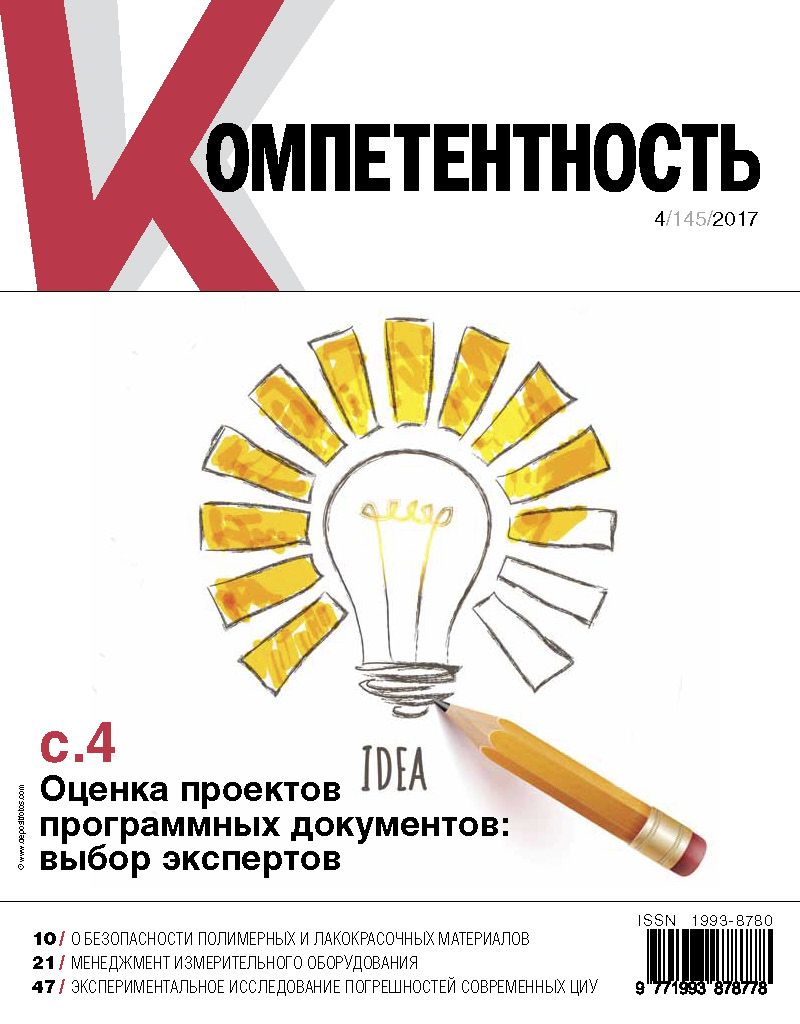Journal Kompetentnost': 4 / 145 / 2017
Articles
-
1
Integrated Assessment Model of Experts’ Competence
Authors: Prof. Dr. V.L. Lyaskovskiy, Professor, Senior Researcher, Federal State Budgetary Institution “46 Central Scientific Research Institute” Russian Defenсe Ministry, Moscow, Russia, dop_big@mail.ruDr. S.S. Smirnov, Associate Professor, Deputy Head of Department, Federal State Budgetary Institution “46 Central Scientific Research Institute” Russian Defenсe Ministry, Moscow, Russia, sss-smirnov@mail.ruDr. A.Yu. Pronin, Senior Researcher, Federal State Budgetary Institution, “46 Central Scientific Research Institute” Russian Defenсe Ministry, Moscow, Russia, pronin46@bk.ru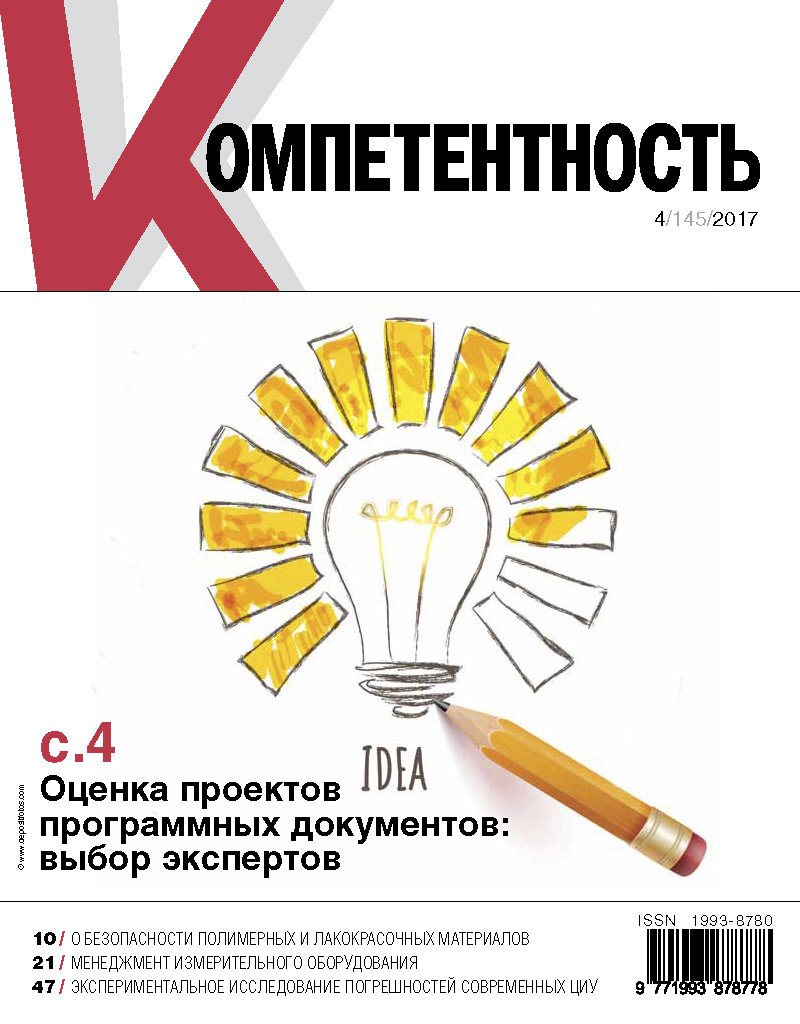 The selection of experts, the formation of expert groups remain the urgent problems
The selection of experts, the formation of expert groups remain the urgent problems
today, as the reliability of expert assessments largely determines the quality of the
finished document. We consider that an appropriate solution to this problem may
be the experts’ competence assessment by ranking. We offer a model that allows a
comprehensive assessment of the experts’ competence, taking into account their
qualifications in the assessed scientific and technical sphere, and also helps to
adjust the assessments of individual experts’ competence by representatives of the
preliminary expert group. The main advantage of the proposed model is the simplicity
of measurement procedures, which does not require complex and time-consuming
training of persons involved in work. We believe this model can find wide practical
application in the formation of projects of state and federal target programs.
Download -
2
Safety of Polymeric and Laсquer Materials are used for Interior Decoration
Authors: N.S. Naydenova, Graduate Student, Dmitry Mendeleev University of Chemical Technology of Russia, Moscow, Russia, nnaydenova94@mail.ruDr. G.E. Smirnova, Associate Professor, Dmitry Mendeleev University of Chemical Technology of Russia, Moscow, Russia, smir-rxtu@mail.ruDr. Kh.A. Nevmyatullina, Associate Professor, Dmitry Mendeleev University of Chemical Technology of Russia, Moscow, Russia, knevm@mail.ru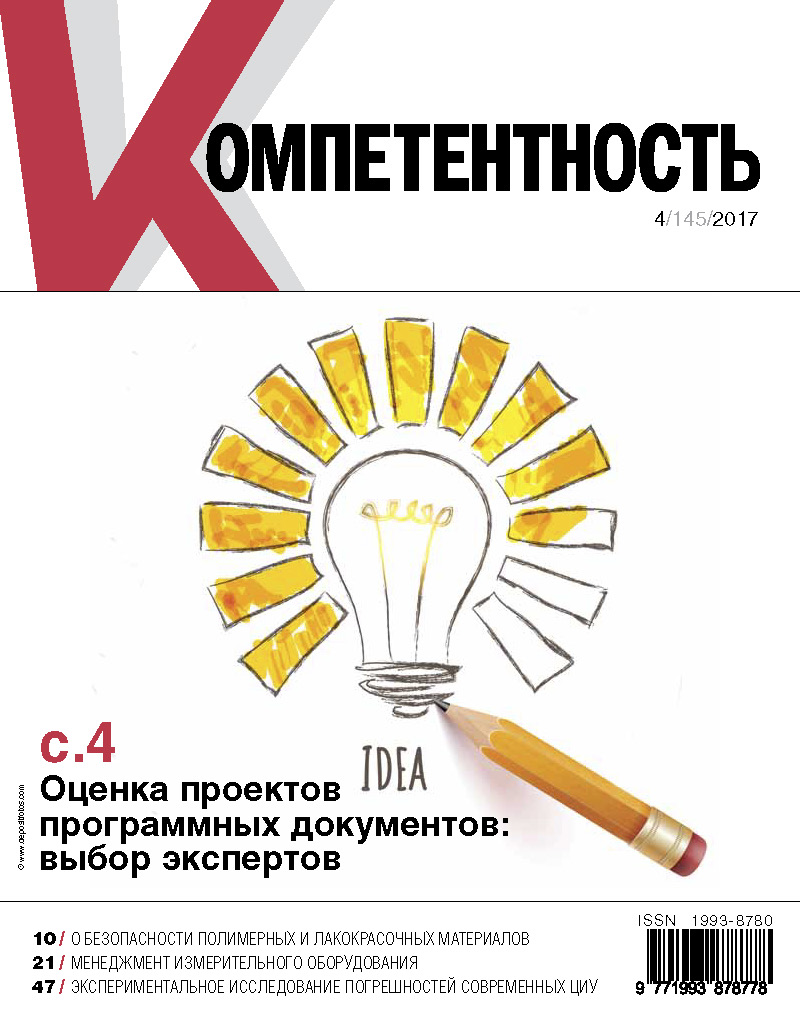 Most of modern polymer materials widely used in construction due to their high
Most of modern polymer materials widely used in construction due to their high
technical properties release into the air environment dangerous to humans and the
environment toxic substances. Therefore, the selection of building materials which are
safe for human health and the environment must be ensured even at the design stage of
urban development facilities. We have considered the current legislative and regulatory
documents in the Russian Federation that establish the requirements for safe handling
of building materials, as well as the draft of the relevant technical regulations of the
Customs Union. We have concluded that the formation of safe construction products’
quality is achievable in the implementation of a set of interrelated activities that must
be developed on the basis of stable compliance with the requirements of regulatory
documentation that regulates the appropriate level of all phases of the facility
construction.
Download -
3
Constant Improvement — the Concept of the PDCA Cycles in the Context of the New Standard ISO 45001
Authors: Assoc. Prof. Dr. V.A. Novikov, Vice-rector, Head of Department, Quality Management, FSAEI FVT ASMS, Moscow, Russia, nva@asms.ruDr. E.B. Bobryshev, Associate Professor, FSAEI FVT ASMS, Moscow, RussiaDr. A.I. Grishin, Associate Professor, Professional Retraining Department, FSAEI FVT ASMS, Moscow, RussiaDr. E.Yu. Barmenkov, Associate Professor, MAI (National Research University), Moscow, Russia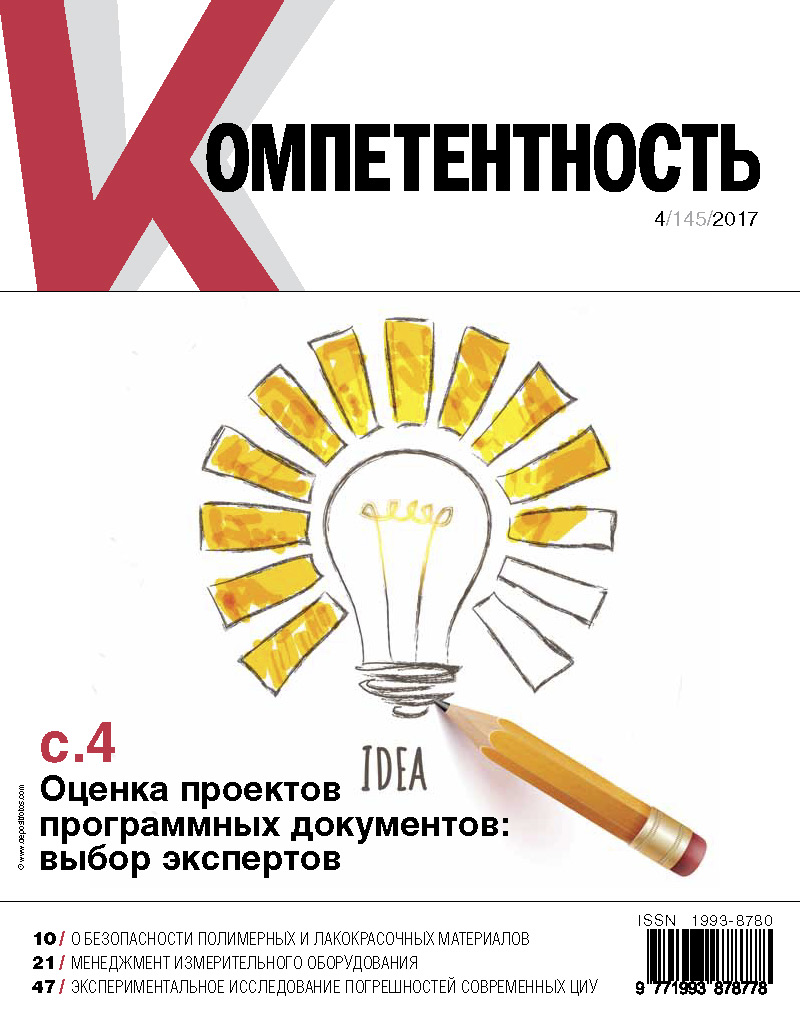 Nowadays, the world community needs standards, which implementation will ensure
Nowadays, the world community needs standards, which implementation will ensure
a high level of health and safety at work by building effective and reliable management
systems. Therefore, the appearance of the draft of the new international standard ISO
45001 in 2016 was quite expected. We have reviewed the changes and have noted the
main advantages of the new document. We have come to the conclusion that the main
difference between the new concept of continuous improvement from earlier models of
management systems is that now the company management must care not only about
its own employees, but also about partners, and also take into account the impact of the
consequences of its current and planned activities on environment and local communities.
Download -
4
Management оf Measuring Equipment
Authors: Dr. B.Ya. Litvinov, Chief Researcher, D.I. Mendeleev Institute for Metrology, St.-Petersburg, Russia, sztul@mail.ruProf. Dr. M.V. Okrepilov, Deputy Director, D.I. Mendeleev Institute for Metrology, St.-Petersburg, Russia, m.v.okrepilov@gmail.comR.V. Pavlov, State Centre Test-St.-Petersburg, St.-Petersburg, Russia, Pavlov@rustest.spb.ru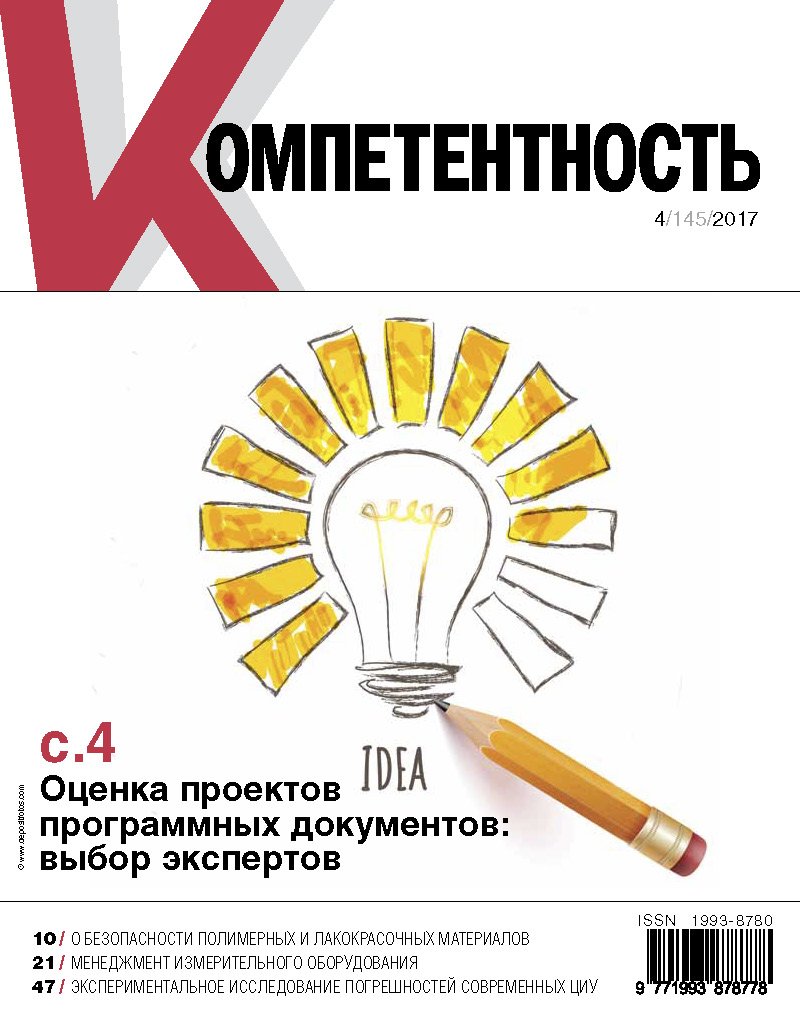 In this article, we have shown that the management system in metrology provides
In this article, we have shown that the management system in metrology provides
the management of organization’s measuring equipment park, including the provision
of necessary measuring instruments’ combination of different numbers. We have
explained that with the nomenclatural optimization of the measuring equipment,
the methods developed within the framework of the pricing theory are applicable.
The application of the criteria for hyperbolic distributions makes it possible to provide
information selection at optimizing the necessary resource. The pricing approach
with the use of hyperbolic N-distribution’s criteria is expedient at the development
of complex standards, for which the problems of mass and single optimal combination
are becoming even more urgent than for working standards, separately in each type
of measurement. We have proposed an approach that does not exclude the existing
methods of optimization, but only complements them in relation to such specific
objects as the measuring equipment of the metrology center.
Download -
5
Modernization of Educational Process Management Based on the Lean Production Principles
Authors: Prof. Dr. V.L. Yanin, Vice-rector, Head of Department, Khanty-Mansiysk State Medical Academy, Khanty-Mansiysk, RussiaZ.М. Korkina, Deputy Head, Khanty-Mansiysk State Medical Academy, Khanty-Mansiysk, RussiaDr. N.А. Sazоnova, Professor, Head of Department, Khanty-Mansiysk State Medical Academy, Khanty-Mansiysk, Russia, umohmgmi@mail.ruAssoc. Prof. Dr. О.М. Bondarenko, Head of Department, Khanty-Mansiysk State Medical Academy, Khanty-Mansiysk, RussiaЕ.S. Ustinova, Methodist, Khanty-Mansiysk State Medical Academy, Khanty-Mansiysk, RussiaI.N. Tarasova, Expert, Khanty-Mansiysk State Medical Academy, Khanty-Mansiysk, RussiaL.N. Zabrodina, Methodist, Khanty-Mansiysk State Medical Academy, Khanty-Mansiysk, Russia We have reviewed the modernization issues in the management system of university’s
We have reviewed the modernization issues in the management system of university’s
educational process. We have focused on the role of lean manufacturing principles that
affect the quality of graduate training. We have determined the main directions of
management modernization and have described the work of the Quality Council as an
additional structural unit of the educational organization management. In our opinion,
the results of the last two years show a significant improvement in the quality of
educational processes in the Khanty-Mansiysk State Medical Academy. The university
activity analysis, built in accordance with the principles of lean production, allows us to
draw objective conclusions, understand the «losses», plan work to eliminate them, get
constant improvements. Systemic work for improving the educational process quality
ensures the growth of training specialists’ quality.
Download -
6
On the Methodology of the Socio-Information Services Quality Evaluation on the Basis of Information Interaction Indicators
Authors: N.S. Shilkina, Applicant, FSUE STANDARTINFORM, Moscow, Russia, a.a.streha@gostinfo.ruS.A. Timofeev, Applicant, FSUE STANDARTINFORM, Moscow, RussiaA.S. Ovchinnikov, Applicant, FSUE STANDARTINFORM, Moscow, Russia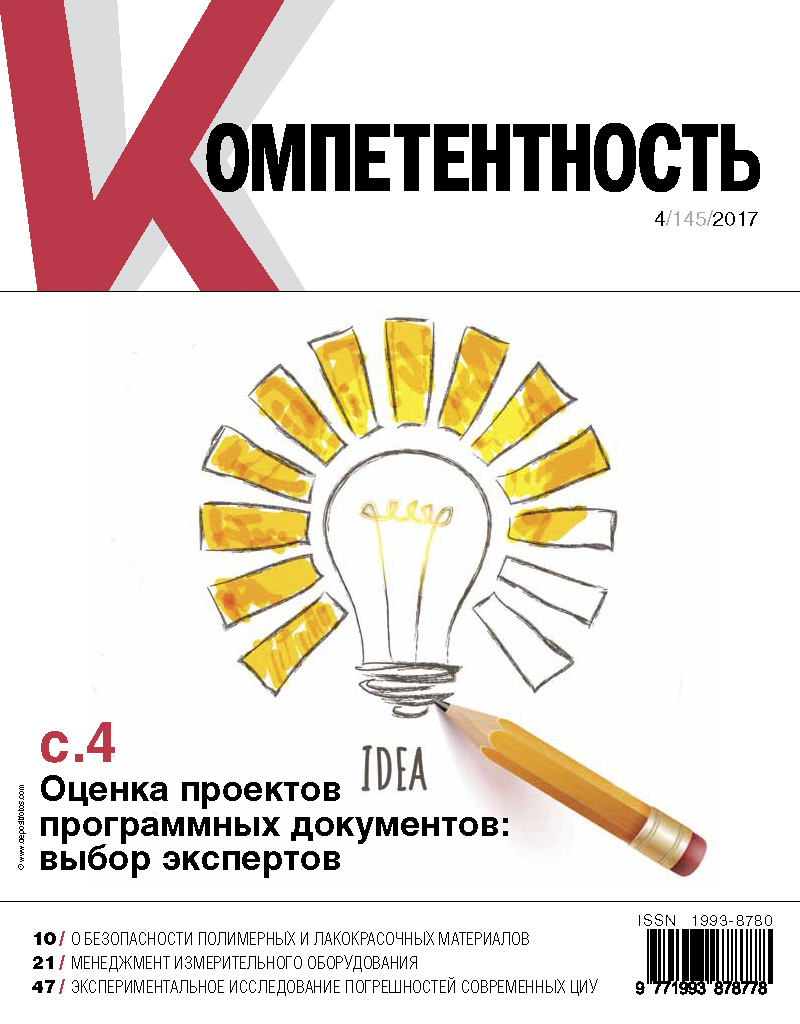 We have presented our methodology for assessing the quality of social and information
We have presented our methodology for assessing the quality of social and information
services based on the indicators of information interaction. We have received
a comprehensive multicriteria assessment of such a service’s quality through the
cumulative consideration of expert and formal approaches’ results. After analyzing
the obtained data, we have found out that the most important criteria for assessing
the quality of providing social and information services to the population are the
completeness and timeliness of providing these services, the degree of solving material
or financial problems in obtaining them, as well as non-material effectiveness /
effectiveness of services provided to clients. We believe the introduction of the hierarchy
analysis method allows us to justify management decisions, choose alternatives, and
rank solutions according to the importance and urgency of implementation from the
perspective to improve the quality of providing social and information services to the
public.
Download -
7
Errors and Uncertainties in the Calibration and Verification of Measuring Instruments of Electrical Quantities
Authors: Assoc. Prof. Dr. Yu. A. Baryshev, Head of Department, Electrical Measurements, FSAEI FVT ASMS, Moscow, Russia, baryshev@asms.ruDr. N.N. Vostroknutov, Senior Researcher, Associate Professor, FSAEI FVT ASMS, Moscow, Russia, vostrkit@yandex.ru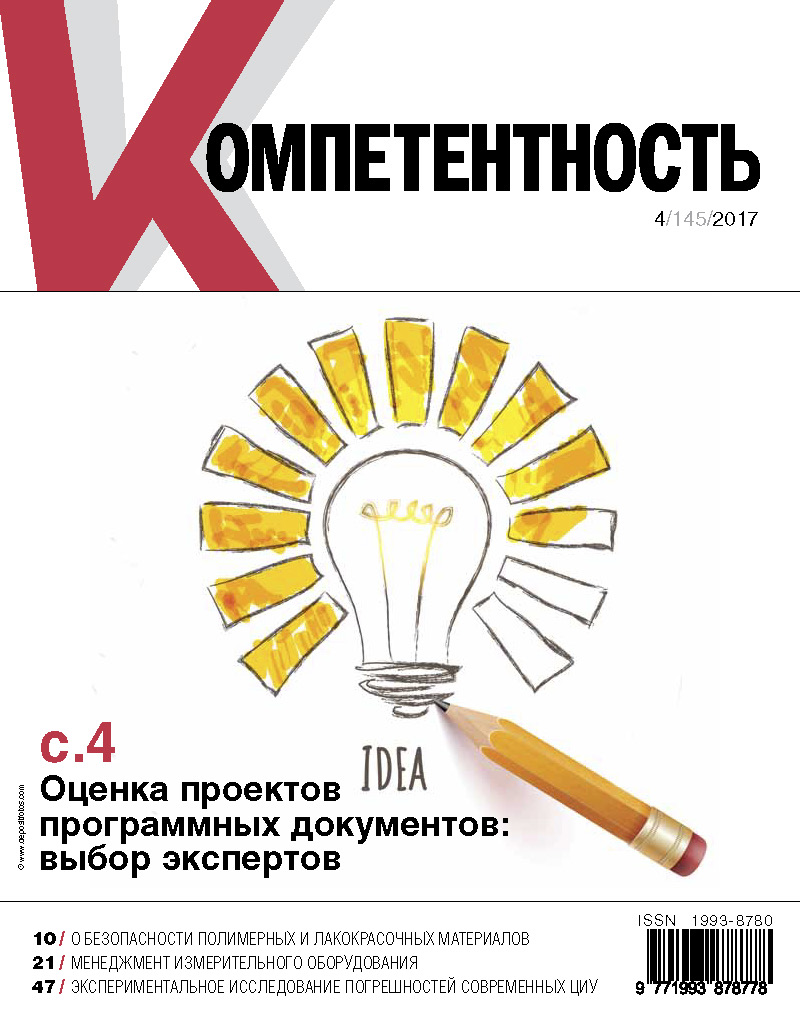 We have reviewed the issues of correct perception of uncertainty. We have given
We have reviewed the issues of correct perception of uncertainty. We have given
a correct interpretation of this term and correlated this concept with the error of
measurements taken during verification of measuring instruments. The error in the
verification of measuring instruments is determined on the basis of single measurements
and has a plus or minus sign. At calibrating the measuring instruments, there is a need to
determine uncertainty, which requires the investigation of metrological characteristics
and it is characterized by a range. It breaks the balance between verification and
calibration. We have offered considering the conditions under which calibration results
of measuring instruments can be used for verification and at the same time comply with
the legal requirements for confirming compliance of this measuring instrument with
metrological requirements. We have presented a mathematical model of calibration,
which will formulate the requirements allowing using the results of measuring
instrument’s calibration during verification.
Download -
8
Experimental Study of Modern Digital Measuring Device’s Errors
Authors: Dr. N.N. Vostroknutov, Senior Researcher, Associate Professor, Department of Electrical Measurements, FSAEI FVT ASMS, Moscow, Russia, vostrkit@yandex.ru In this work, I have determined that the possibility of extending a number of
In this work, I have determined that the possibility of extending a number of
requirements of the widely known document MI 1202–86 «Digital instruments
and measuring transducers of voltage, current and resistance. General technical
requirements and methods of tests» on modern microprocessor-based digital measuring
instruments is beyond doubt. However, the possibility of extending to such devices
some of the other requirements of this document, for example, on the rules for choosing
verified indications, needs to be checked and clarified. In this article I have presented
the data obtained during the experimental studies of dependence of modern digital
device’s error on the measured quantity’s value. Appropriate changes and additions
to the methodology for selecting the indications verified during verification of such
devices according to MI 1202–86 are proposed on the basis of these data.
Download
